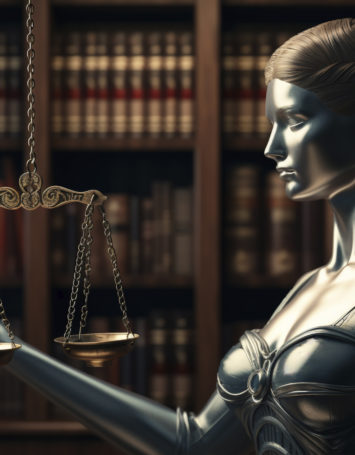Written by Caleb Gilliam-Scott
In a recent High Court Judgement in the UK, Emotional Perception AI Ltd. successfully appealed a Decision of the UK Intellectual Property Office (UKIPO). The Judgement involves the debate over whether a hardware artificial neural network (ANN) qualifies as a computer or a computer program. The distinction is crucial, as it determines the applicability of certain patentability exclusions related to computer programs, lying at the intersection of legal definitions and the evolving landscape of AI technology.
Historical Approach
Until now, AI inventions typically fell at the early-stage hurdle of being excluded from patentability for being a computer program “as such”, assessed under the four stage approach established in Aerotel Ltd v Telco Holdings Ltd. Surviving inventions go on to be subjected to the five signposts for assessing technical contribution proposed in AT&T Knowledge Venture v Comptroller of Patents. Whilst being technically implemented using a technical means, the outputs of some AI inventions can be in fields lacking technical character (such as supposedly in the present case of music recommendations based on similar human emotional perception), and often fail the signposts for being considered as subjective and of a cognitive nature.
In a change from the norm, the Judgement analyses how, and whether, the patentability exclusion is invoked by considering two questions: where is the computer, and where is the program?
ANN: Program or Computer?
Expert testimony is relied upon in the Judgement to emphasize the difference between traditional computer programming and machine learning. Machine learning, as exemplified by ANNs, does not rely on hand-crafted rules, or follow a step-by-step instructional basis. Instead, it learns from training data, adjusting its internal parameters without explicit human programming. The term “frozen state” is introduced in the context of characterizing the result of a hardware ANN’s internal workings during the learning process. The Judgement notes that in this frozen state, the hardware ANN contains biases, weightings, and other learned parameters for the processing of data, and thus the Judgement concludes—based on multiple dictionary definitions—that a frozen state ANN is a computer and not a computer program.
During the construal of the claims, the Judgement finds that any actual program present is only a subsidiary part of the patent claims because the ANN parameters themselves are not necessarily part of the program. Accordingly, the exclusion is not invoked: there is a computer, but no computer program.
Irrespective Technicality
The Judgment goes on to consider that even if there were a computer program, it would have technical character, emphasizing the improved recommendation message as the technical contribution. The argument revolves around whether the external effect, such as the sending of an improved music file recommendation, qualifies as a relevant technical effect, thus preventing the exclusion from applying.
The Judgement ultimately agrees with the Appellant’s argument, asserting that the movement of data outside the computer system, specifically the file transfer, constitutes a technical effect. This, coupled with the method of file selection based on similarity criteria, fulfils the requirement of a technical effect and allows the invention to escape the exclusion as a computer program “as such.”
The heart of the Judgement’s finding that that the subjective impact on the end user does not disqualify it as a technical effect can be found at paragraph 76:
“The Hearing Officer seemed to consider that a subjective appreciation of the output of the system was just that, subjective and in the user, and therefore not a technical effect. I do not consider that to be the correct analysis… The correct view of what happened, for these purposes, is that a file has been identified, and then moved, because it fulfilled certain criteria. True it is that those criteria are not technical criteria in the sense that they can be described in purely technical terms, but they are criteria nonetheless, and the ANN has certainly gone about its analysis and selection in a technical way. It is not just any old file; it is a file identified as being semantically similar by the application of technical criteria which the system has worked out for itself. So the output is of a file that would not otherwise be selected. That seems to me to be a technical effect outside the computer for these purposes, and when coupled with the purpose and method of selection it fulfils the requirement of technical effect in order to escape the exclusion… There is a produced file with (it is said) certain attributes. The file produced then goes on to have an effect on the user (if the thing works at all) but one cannot ignore the fact that a technical thing is actually produced. It would not matter if the user never listened to the file. The file, with its similarity characteristics, is still produced via the system which has set up the identification system and then implemented it.” (Emphasis added)
Thus, the Judgement identifies technicality among the otherwise subjective music recommendation, decoupling the technical effect from the human to such an extent that even if the recommendation were not acted upon the ANN has concluded a technical process.
This Judgement, if followed subsequently, could open the door for a whole host of other “classifier” type inventions in previously unpatentable areas in the UK, such as finance: ANN classifiers select items, and the act of selecting based on criteria is technical, irrespective of what is actually selected, such as a stock or insurance policy.
Implications for the AI Sector
As the AI sector continues to push boundaries, legal considerations become integral to its growth. The recent Judgment on hardware ANNs raises questions that demand thoughtful answers to ensure legal frameworks keep pace with technological advancements.
Intellectual Property: The Judgement could influence how patent applications related to AI technologies are processed. The legal acknowledgment of ANNs as computers might open new avenues for patent protection and litigation within the sector.
Regulatory Landscape: The Judgement’s implications on the regulatory landscape are substantial. It may prompt lawmakers and regulatory bodies to revisit and refine existing frameworks to accommodate the unique characteristics of AI technologies. Indeed, recently in March the UK Government published a response to call for views on artificial intelligence and intellectual property.
Innovation and Collaboration: Clarity on the legal status of ANNs could foster a more conducive environment for innovation and collaboration within the AI sector. Entities may feel more secure in investing resources and efforts into the development of AI technologies.
These impacts underscore the need for ongoing dialogue between the legal and AI communities. As the sector evolves, so too must the legal frameworks that govern it, ensuring a balance between fostering innovation and addressing societal concerns.



